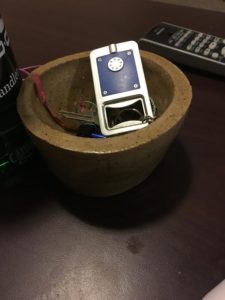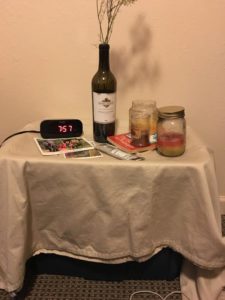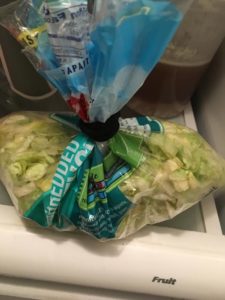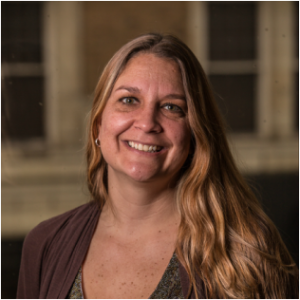





Our team, the Hospital Helpers, updated Michelle Peters through a visual presentation of the information we gathered and analyzed thus far.
Main Takeaways
Teammates Dan, Cole, and I were supposed to have a phone call with someone from the South Bend Public School Bus System to understand how the transportation areas and routes are determined. However, we did not hear back from our contact and did online research. We are hoping to be able to speak to someone about this soon, as we believe this is an analogous situation to SJHS’s transportation problem at hand.
Public school buses must determine which areas to serve, how many stops are made, and the location of the stops to help students safely and efficiently get from point A to point B.
Public School Bus:
Parallels for SJHS:
Date: 3/6/17
Location: SJHS Mishawaka Medical Center
Participants: Helen Sung
As Alex mentioned in her previous blog post, I visited the Medical Center and asked patients in the open to mark a red X on the problematic stages of getting from home to a medical appointment on time.
2 had said journey map didn’t apply to them, as they did not experience transportation issues. 1 woman said it was difficult to make it to appointments on time because she has to take her 2 young children with her. 2 said arranging transportation was difficult.
Possible bias: I asked patients who were out in the open in the lobby and café areas. More of these people may be waiting for a ride rather than have their own because a person who drove would be less likely to be just waiting in the lobby looking out at the parking lot.
I noticed that those who find transportation an issue have not chosen to explore public transportation, especially the Transpo bus running throughout South Bend. Near the elevators behind the lobby, there is a single Transpo bus stand giving directions to the Medical Center. Maybe if it was more noticeably placed towards the front desk, receptionists and nurses will remember and be more likely to inform their patients of the options they have.
As an immersion, I tried to role-play what many patients without a personal vehicle do- hitch a ride or borrow a car. This immersion took place on 3/6/17, anytime between Monday from 2:30-5:00PM. My classes ended at 2:30 and the doctor offices closed at 5:00, so this was the only available window I had on this day.
I had tried to arrange for a ride on the previous Friday, three days in advance of the given date I had expected to go to the hospital. I asked a couple close friends, who were more than willing to give me a ride, but there were either conflicting schedules with their classes or I did not have a guaranteed ride back.
I asked three other people who owned a car if I could borrow it and was finally able to secure a ride after asking a total of five people. As each person said their sincere apologies and explained their conflict schedule, I was able to empathize with those who face these challenges everyday. It felt very frustrating and confining. After I was told I could borrow my friend’s car that afternoon to go to the hospital, a great sense of relief came over me.
At 2:00PM, I was sent out to search up and down the vast rows of D Bulla for a car I had never seen before. It took a good while before I found that faded blue Ford Focus. From Notre Dame to SJHS Mishawaka Medical Center, it took about 15 minutes and was a total of 3.3 miles. The patients I interviewed both had mentioned that they also live a 20 min driving distance away from the hospital. By the time I had parked and walked through the entrance, it was approaching 3:00PM.
From the worries of navigating the car in the parking lot to the frustration and pressure of the time limit I had, I felt disorganized upon entering the hospital. I conducted my interviews and quickly headed back, as I was under a time constraint to get the car back to my friend by 5:00PM sharp.
The purpose of this immersion was to put myself in the shoes of a patient who had no car and relied on those in her social sphere who would take her from point A to point B. This would be incredibly difficult and tiresome to do over a longer period of time and with children.

Helen Sung interviewed Roxanne Ultz, Executive Director of the Family & Children’s Center of St. Joseph County, regarding the clients and services FCC offers.
Date: 3/6/17
Type: Expert Interview
Location: Hesburgh Library; phone call
Team participants: Led by Helen and observed with Cole
User Characteristics:
Can you briefly tell me about what kind of services Healthy Families provides?
Who are the services targeted for?
Why did the program choose to provide at-home services?
What is the transportation system of the program right now?
Insights
Helen Sung, accompanied by Cole Gillan, conducted an individual interview with patient Kate at about the transportation challenges she faces everyday.
Date: 3/3/17
Type: Individual Interview
Location: Mishawaka Medical Center; sofa in the main lobby
Team participants: Helen Sung, accompanied by Cole Gillan
User Characteristics: “Pregnant Patient”
Quotes:
Insights:
Activities
Environment
Interactions
Objects
Users
Team member Helen Sung, accompanied by Cole Gillan, interviewed Laura, mother of a patient, about her experiences regarding transportation to and from the hospital.
Date: 3/3/17
Type: Individual Interview
Location: Specialty Pediatrics at SJHS Mishawaka Medical Center; waiting room
Team Members: Helen Sung accompanied by Cole Gillan
User Characteristics: “Mother of Patient”
Quotes:
Key Insights:
Activities
Environment
Interactions
Objects
Users